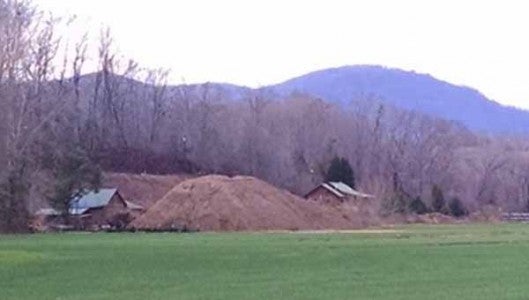Where has all our topsoil gone?
Published 10:00 pm Wednesday, January 27, 2016
Where have all the flowers gone, long time passing?
Where have all the flowers gone, long time ago?
Where have all the flowers gone?
Young girls have picked them everyone.
Oh, when will they ever learn?
Oh, when will they ever learn?
We all know this song by Pete Seeger, and we probably know the next five verses by heart. For fun, try singing them right now before reading on. Clue: young girls-young men-soldiers-graveyards-flowers.
I have a new verse, inspired by this picture taken last month at a site next to the North Pacolet River. The pile of topsoil dredged out of the river towers over the houses (not little sheds!) beside it.
Where has all our topsoil gone, long time passing?
Where has all our topsoil gone, long time ago?
Where has all our topsoil gone?
Gone to South Carolina, ton by ton.
Oh, when will we ever learn?
Oh, when will we ever learn?
We all know about erosion, and sedimentation, and why it happens. We see it taking place, and we do nothing about it because we’re more interested in protecting private property rights than in protecting our soil. In Saluda topsoil is only three inches deep at best; it’s nearly 14 inches deep on the bottomlands below the South Carolina line. The problem facing us is that repairing the problems of streambank erosion are very, very expensive; the folks who caused the problem are long gone and were never held responsible.
Here’s a paragraph from a 1928 Forestry Primer: “Each year millions of tons of America’s best and most fertile soil are washed away and forever lost. It flows out into the sea or into river beds where, instead of serving some useful purpose such as growing trees or some other crop, it piles up to form dangerous shoals and bars.” Fact: 100 percent of the soil on the side of a raw bank goes downstream. That seems like an obvious statement, doesn’t it? But so often we just let that dirt go, a little at a time, which ends up being ton by ton.
Do we spend the money to rebuild our streambanks, or simply let it go?
I know that the problem is big enough that I feel helpless at times. There is erosion on Camp Creek, on land that we own. Without hiring someone with heavy equipment to re-rout the “dangerous shoals and bars,” all I can do is patch the blowout spots with rocks, logs, and debris that hopefully will hold the streambank while encouraging the water to stay in the middle of the stream. And, plant water loving, deep-rooted trees and native grasses along the banks. That’s all that I can do by myself. But if we all did that, in another 100 years we might be able to reverse the damage perpetrated by our grandfathers.
Don’t get me wrong; I like the folks in South Carolina. But North Carolina’s topsoil needs to stay in North Carolina, and that’s a fact!






